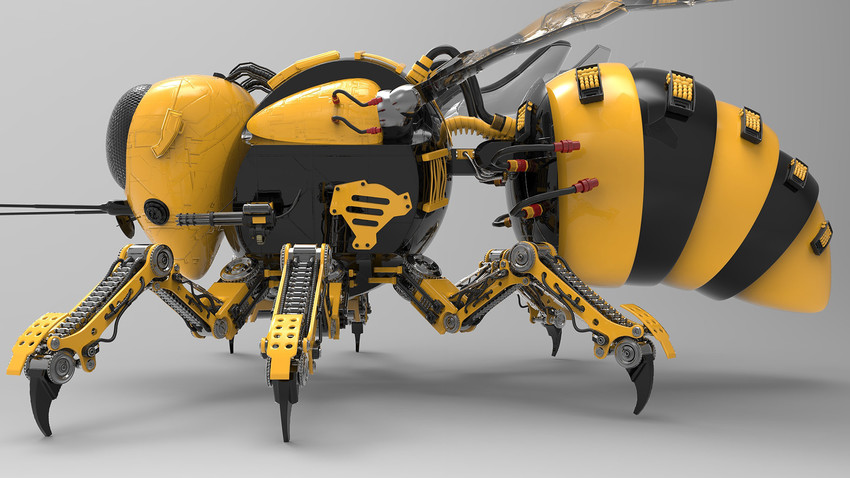Can Russian ‘robo-bees’ help produce more strawberries?

Scientists at the Russian Tomsk Polytechnic University, the Japan’s National Institute of Advanced Industrial Science and Technology, Harvard University, and the Charles Stark Draper Laboratory are working on developing 'robo-bees'
Legion MediaBees in the wild are facing grave threats to their existence, and while some of the reasons include pesticides and poor nutrition, the mystery has not been completely solved.
Today, most farmers have to buy or rent bee colonies, which contributes to a rise in food prices, according to the U.S. Bee Informed Partnership. American beekeepers have lost an estimated 40 percent of their managed honeybee colonies.
Russian scientists at the Tomsk Polytechnic University (TPU) now offer an alternative: robo-bees. Researchers plan to launch the project in 2019, and the size of the prototypes will be at least seven times bigger than real bees, which means that they’ll be the size of a human palm.
For greenhouse use only
According to Alexey Yakovlev, the head of TPU’s School of Engineering, artificial bees will be especially beneficial for strawberry and other plants that grow in greenhouses all year round.
"We plan to develop the robo-bees, algorithms and software, as well as optical systems and image recognition methods for accurate positioning,” Yakovlev said. Creating the first batch of 100 flying robots will cost around $1.4 million.
"For year-round pollination in large greenhouses farmers use bumblebees,” Yakovlev said “One bumblebee family costs about $500. In winter, they fly in infrared light, which simulates solar heat, but in spring the whole bumblebee family can escape. This, of course, is an economic loss.”
The robots, of course, will work non-stop and will never leave.
Artificial bees, however, will not solve the problem of the species facing possible extinction, said Yakovlev. “We will use robo-bees only in greenhouses, outside their natural habitat.”
Apple, cherry and other produce growers, however, also use bees in open spaces. Almond growers in the U.S., for example, are paying around $200 for a hive of bees, while blueberry growers pay $110 per hive, and apple growers pay around $70.
Some famers and agricultural companies are considering pollination with alternative species. According to experts, there are other important pollinating creatures, such as bats, flies and mosquitos.
When will robo-bees fly?
Efforts to create an artificial alternative to bees hasn’t yet been successful. In 2017, Eijiro Miyako, a researcher at Japan’s National Institute of Advanced Industrial Science and Technology, developed a drone to deliver pollen between flowers.
The bottom is covered in horsehair and coated in a special sticky gel. When the drone flies onto a flower, pollen grains stick lightly to the gel, and then rub off on the next flower visited.
In experiments, the drone was able to cross-pollinate Japanese lilies. The soft, flexible animal hairs did not damage the stamens or pistils when the drone landed on the flowers.
Miyako’s team, however, is still working on developing autonomous drones that could help farmers. GPS, high-resolution cameras and artificial intelligence will be required for the drones to independently track their way between flowers, and land on them correctly.
There are other inspiring developments. Researchers at Harvard University developed a RoboBee that weighs less than one-tenth of a gram. It’s equipped with smart sensors that respond to their environment, mimicking the eye function of real bees.
The Charles Stark Draper Laboratory in Cambridge, Massachusetts is working on DragonflEYE, which could be used for guided pollination.
Finally, in March, Walmart filed a patent for drone pollinators.
These prototypes, however, are not yet advanced enough for mass pollination, and much more time and research is needed before the first high-tech colony of robo-bees will hit the fields.
If using any of Russia Beyond's content, partly or in full, always provide an active hyperlink to the original material.
Subscribe
to our newsletter!
Get the week's best stories straight to your inbox